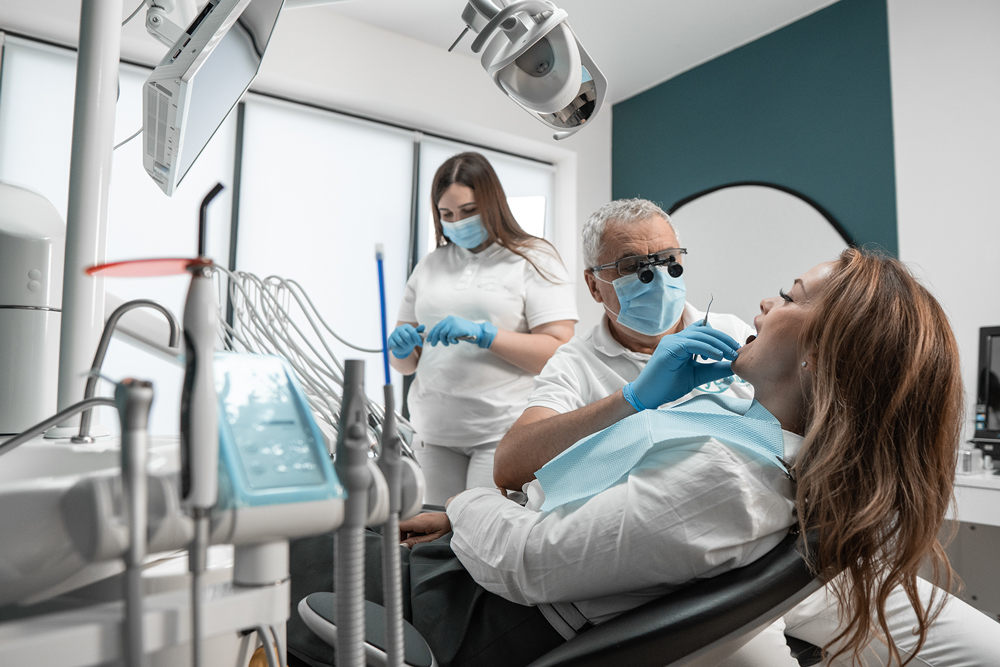When it comes to straightening teeth, patients often want to know whether Invisalign or regular braces work faster. While Invisalign often shows quicker results, the real answer depends on your specific situation.
Think about straightening teeth like cleaning up a messy room. If your room only has a few things out of place, it won’t take long to tidy up. But if it is really messy, it will take more time. Your teeth work the same way! The time it takes to straighten them depends on things like how crooked they are to start with, how well you stick to the treatment plan, and your overall dental goals.
How Do Braces and Invisalign Work?
When it comes to straightening teeth, patients often want to know whether Invisalign or regular braces work faster. While Invisalign often shows quicker results, the real answer depends on your specific situation.
Think about straightening teeth like cleaning up a messy room. If your room only has a few things out of place, it won’t take long to tidy up. But if it is really messy, it will take more time. Your teeth work the same way! The time it takes to straighten them depends on things like how crooked they are to start with, how well you stick to the treatment plan, and your overall dental goals.
Invisalign vs. Braces: Which is Faster?

Though it all depends on each patient’s needs, Invisalign treatment is usually faster than traditional braces.
Invisalign: On average, Invisalign treatment takes about 12 to 18 months. This can vary depending on how crooked the patient’s teeth are. For people with mild to moderate orthodontic problems, Invisalign may work even faster. However, if a case is more complex, the treatment might take longer, just like braces would.
Braces: Traditional metal and clear braces tend to take a bit longer than Invisalign. Treatment with braces usually lasts between 18 months and 2 years, depending on what problems need to be fixed. If the patient’s teeth need a lot of shifting because they are very crowded, the bite is off, or the teeth are really out of place, braces are usually the better choice, even though they might take longer.
So, in general, Invisalign may be faster for those with simpler dental issues, but both methods can take a different amount of time depending on the patient’s specific needs.
Why is Invisalign Faster Than Braces?
Invisalign treatment uses clear, custom-made aligners that gradually shift the teeth into place. These aligners are removable, which gives them a major advantage in terms of comfort and flexibility. Here’s why Invisalign can sometimes work faster:
Custom fit and movement: Each Invisalign aligner is custom-made to fit the patient’s teeth. Computer technology plans out exactly how the teeth should move, so the results are precise and easy to predict. Patients wear each set of aligners for about one to two weeks before moving to the next set. Because Invisalign is designed to fit snugly over the teeth and apply gentle, controlled pressure, it can sometimes move teeth more quickly and efficiently than traditional braces.
Fewer adjustments needed: Unlike braces, which require regular trips to the orthodontist for tightening and repairs when brackets come loose, Invisalign adjustments are already built into each aligner set. Invisalign only requires check-ups every 6-8 weeks to make sure the treatment is progressing as planned.
Removable: Since Invisalign aligners are removable, patients do not have to worry about food getting stuck or having to work around metal parts when eating or brushing and flossing. Being able to keep teeth and gums cleaner can mean fewer issues like cavities or gum disease, which could slow down treatment.
For people who need only minor to moderate teeth movement, Invisalign can sometimes provide a faster route to a straight smile.
Factors That Affect Treatment Time for Invisalign and Braces

Whether a patient chooses Invisalign or braces, several factors will influence how long the treatment will take.
Severity of dental issues: If a patient’s teeth are only slightly crooked or crowded, Invisalign might get the job done quicker. But for more severe issues, like extremely crooked teeth, bite problems, or gaps between teeth, braces may be necessary. The more movement the teeth need, the longer the treatment is likely to take, regardless of which method the patient chooses.
Age: Age can play a role in treatment time. Though both braces and Invisalign can work for adults, younger patients often see faster results because their teeth and jaws are still growing and are more adaptable. Adults might take a bit longer since their bones are fully formed.
Wear time: With Invisalign, it is very important to follow the rules. Patients have to wear the aligners for 20 to 22 hours a day so they work properly. If they do not wear them enough, treatment can take longer. Braces, on the other hand, stay on the teeth all the time, so they are always working.
Treatment goals: Some people might only need minor changes to their smile, while others may want a complete transformation. The complexity of the changes the patient needs can also affect how long they have to wear their braces or Invisalign trays.
Other Differences Between Invisalign and Braces
While speed is an important factor to consider, other key differences between Invisalign and braces mightthere are other key differences between Invisalign and braces that might influence the decision.
Appearance: Invisalign is often preferred because it is not easy to notice. The aligners are made of clear plastic, so they blend in with the patient’s teeth. Braces, on the other hand, are more obvious because of the metal brackets and wires. Even tooth-colored ceramic braces can be harder to hide.
Comfort: Invisalign is generally considered more comfortable than braces because the aligners do not have metal wires or brackets that can irritate the inside of the mouth. Braces can cause discomfort, especially after an adjustment, when the wires are tightened and put more pressure on the teeth.
Maintenance and care: With Invisalign, patients must remove the aligners every time they eat or drink anything except water. Braces are fixed in place, so patients do not have to worry about removing them. However, they still need to clean around the brackets and wires carefully, which can be tricky.
Dietary restrictions: With braces, patients need to avoid hard, sticky, or chewy foods that can damage the wires or get stuck in the brackets. Since Invisalign aligners are removed before eating, there are limits on foods.
Cost: The cost of either treatment varies by region, and the specific dentist or orthodontist seen for treatment, and the complexity of the case. In general, braces tend to be less expensive:
- Average cost of Invisalign is between $3,000 and $7,000
- Average cost of braces is between $2,000 and $6,000
Which Option is Right for You?
If you’re looking for a faster treatment, Invisalign may be the better option, especially if your dental issues are mild to moderate. However, if you have more complex dental problems, braces might take longer but could provide better results.

The first step is to talk to your orthodontist, who can evaluate your specific needs and recommend the best treatment plan. To get started, book an appointment today!


